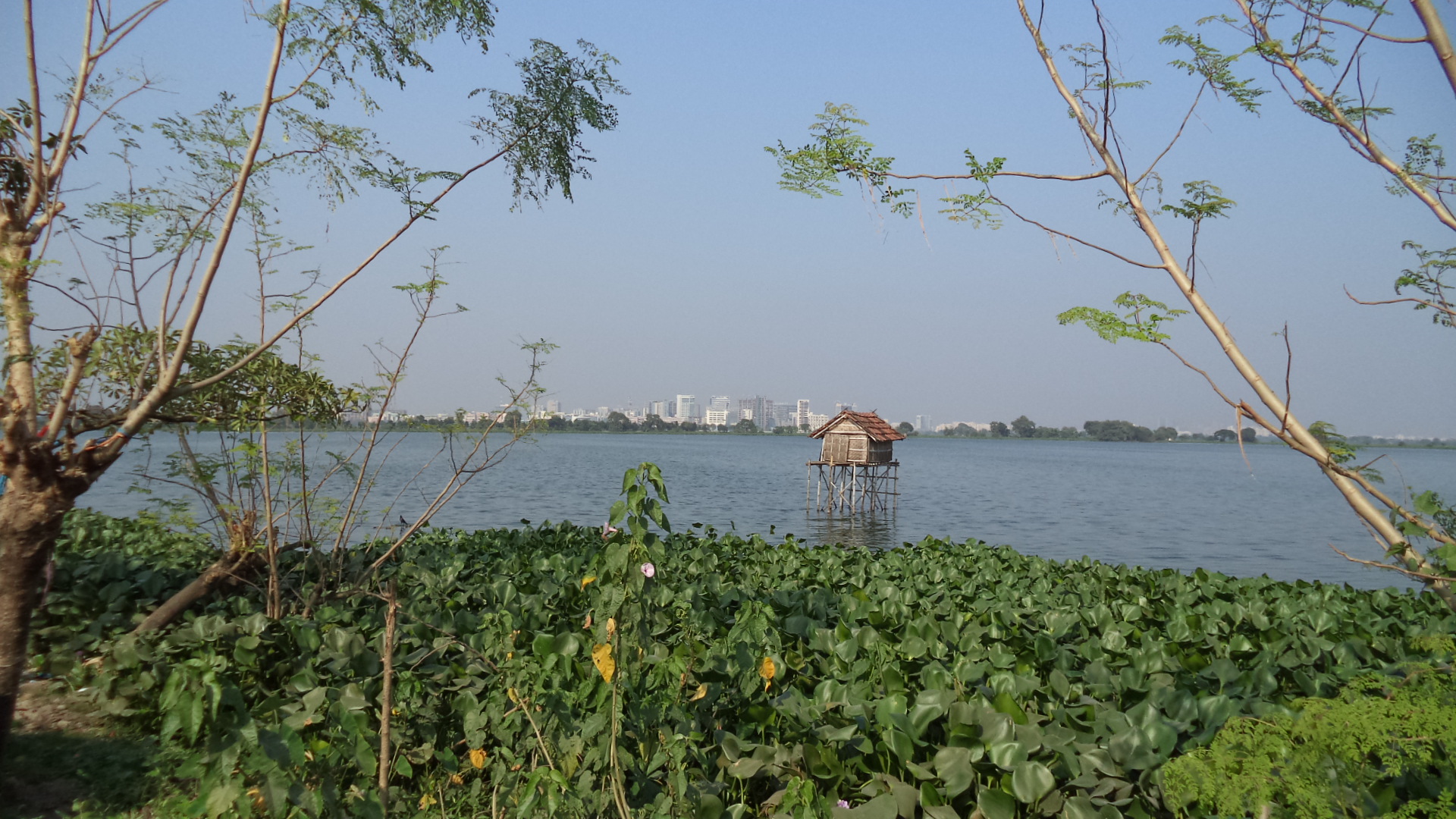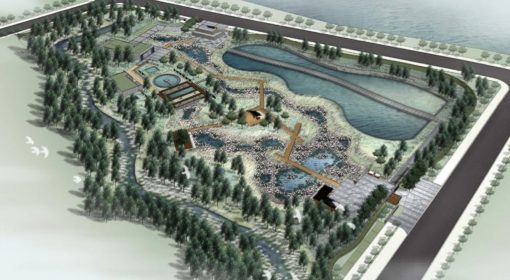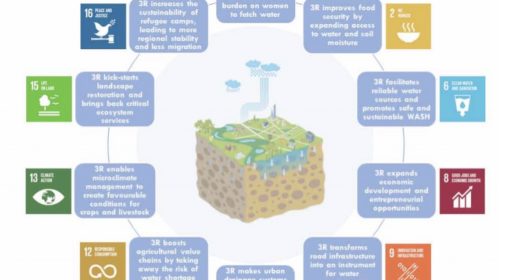Posted by Raktima Mukherjee and Frank van Steenbergen
November 11, 2013

Dark putrid water enters, and fresh water emerges. The waste water from a burgeoning megacity turns into a productive fish habitat – nothing short of ecological magic. These are the Eastern Kolkata Wetlands, the huge water bodies that serve as urban kidneys for Calcutta (now named Kolkata).
This is how it works: Urban waste water supplied by the Municipal Corporation is routed through a series of small inlets, each managed by a Fishery Cooperative. The Cooperatives control the inflow of the waste water, they let it settle so that only the clear top layers of water flow into the shallow wetland. A parabolic fish gate separates the wetland water from the waste water (see picture). The parabolic structure is there to prevent fish swimming into the oxygen-less urban waste water, where they would die.
In the meantime nature does its work. In the inlets, organic waste settles down and is partly decomposed in the warm shallow water. In a series of biological steps, the organic waste in the wetland is converted into fish feed. There are several ecological processes at work: soil bacteria, macro-algae, plant bacteria and plants themselves convert nitrate, and absorb phosphate and heavy metals. The sediments in the waste water settle down. As the water becomes less turbid, sunlight accelerates some of these processes.
The wetland is managed by the Fishery Cooperatives which release fish fingerlings three times a year and occasionally add lime to the water to control fish diseases. A typical cooperative has 150 members, each owning the inlet and the land around. They release the nutrient rich water in the morning, harvest fish from the waist-deep wetland, protect it from the theft by keeping an eye from watch posts all around the lake, and transport the catch to the wholesale market in their own transport rickshaws.

Membership of the Cooperatives passes down in the family. Of late, the cooperatives have diversified their source of income, renting out the land on the border of the shallow wetland for picnics or movie shootings. The winter season when migratory birds descend on the shallow water bodies is particularly popular.
There are several challenges and changes for the Eastern Kolkata Wetlands. An important one is the composition of the waste water. Earlier there were many cowsheds in the city but these have now all been moved out. This has made the waste water less ‘nutritious’: fishermen estimate that it now takes fish six months to mature instead of three months as used to be the case.
Then there is also the pressure on the land in a fast growing city. Unfortunately, some of the wetland areas have been filled with residential houses and the image is of a city choking itself. The fishermen are also keen to remove some of the sludge and sediments from the wetland but since the area is so crowded there is no place to deposit the material. It causes the wetlands to get shallower, which obstructs the inflow.
Also, not all waste water goes to the wetlands, and there is a complaint that sometimes the supply of the nutrient rich water from the Municipal Corporation is erratic.
Yet in spite of these pressures, the Eastern Kolkata Wetlands are a magnificent example of multifunctional infrastructure: waste water treatment, fish for the city, tourist spots. Also the wetlands feed local drinking wells and support the cultivation of vegetables.
One wonders why not more cities have such kidney systems, even as they grow and generate more and more waste water. There must be more opportunities for managed urban wetlands. Moreover, with pre-treatment, changing vegetation, pulsing inflow and hydraulic control structures, their functioning can be optimized. They have everything going for them: they clean up waste water at no cost; they create amenity and generate much needed employment and jobs while converting waste into nutrients.

